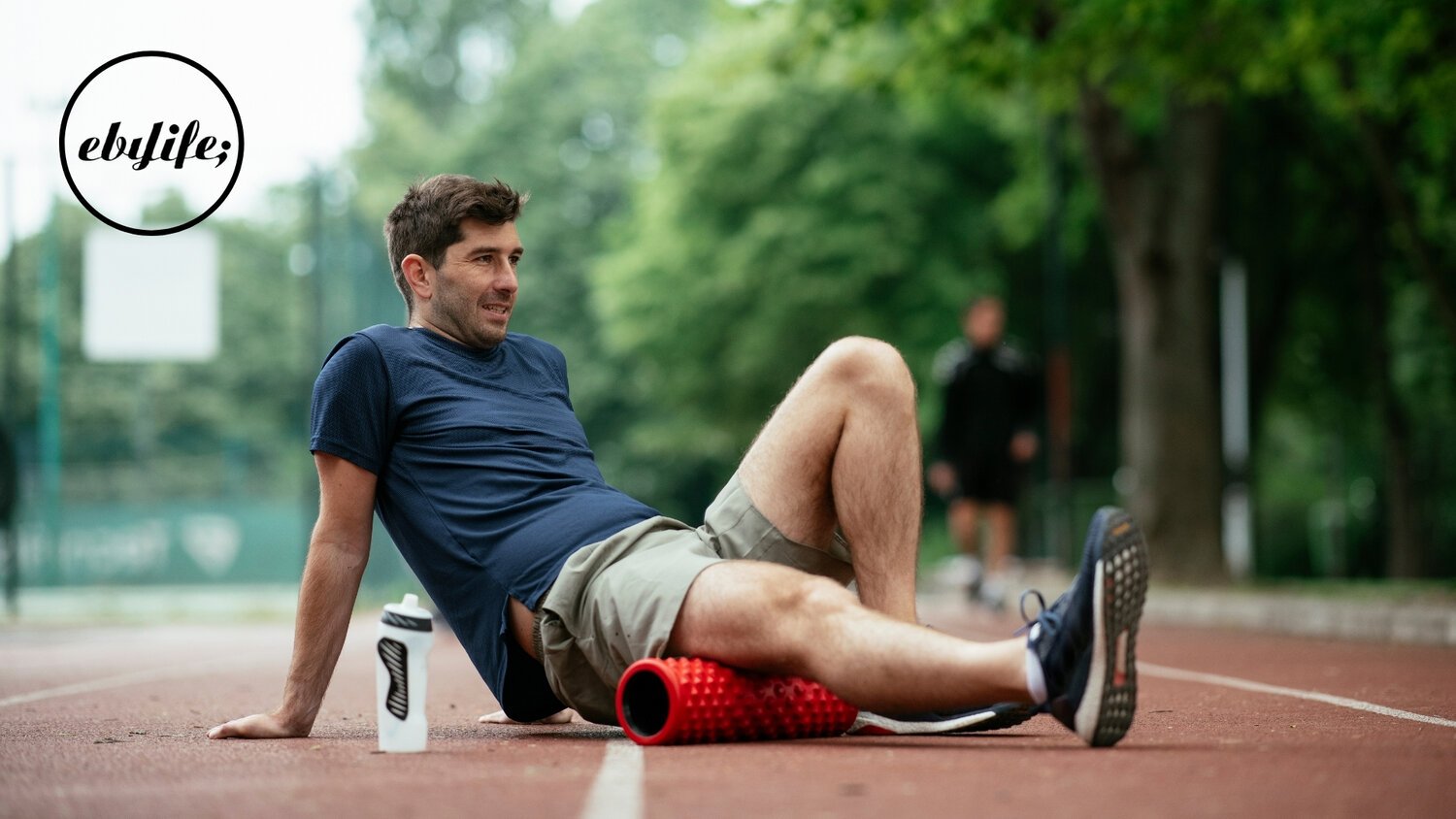How to Get The Most out of Rest Days
Written By: Martin Ebner - Head personal trainer and Founder of Ebylife.
For as many times as I've said to clients "don't skip leg day", it is by no means the most important training day. Don't get me wrong, I know all too well the importance of a grueling leg day, but I'd like to offer this advice instead: don't skip rest day! It doesn't matter how much time and effort you put in at the gym, if you aren’t giving your body adequate time to rest and heal with an occasional day off, your body and mind will inevitably burn out. Not only that but overtraining can increase your risk of injury which is far more detrimental to your workout goals and success than the occasional day off. So when the time comes for a sacred day of rest, here's what you can do to get the most out of it for your body and mind.
The importance of rest
Recovery days are exactly what they sound like; after pushing and straining your body, recovery days give it time to relax and heal. High-intensity exercise (and really, any type of strength training exercise) causes the muscle tissue to tear. The more intense the exercise, the deeper the tear which can cause increased soreness, a reduced range of motion, and weakened tissue. These microscopic tears only start to heal and grow back 24-48 hours after training and when at rest. So, while following an intense daily workout routine may keep you sane, if you want your hard work to pay off, you need to give your body time to rest and heal itself. It's recommended that at the very least, you take a rest day every three to five days.
It's not just your muscles that need time to heal. Overtraining and running on empty compromises your musculoskeletal system, nervous system, and immune system. This can put you at a greater risk for injury and illness. If your body and mind are under stress, your cortisol levels will rise and your gains will fall. As somebody that suffers from a fairly sensitive central nervous system, I can tell you from experience that there is a very fine line between the perfect amount and too much. Obviously, how much you do, both in terms of intensity and frequency is a case of trial and error but the very best thing you can do is to listen to your body. If it’s crying out for a rest day, listen to it and take one (or two). You’ll come back rested, stronger, and more determined the following day!
If exercise is your sanity, I hear you! A rest day does not have to mean a cheat day, eating junk foods and sitting on the couch. Active recovery can help you maintain your workout schedule without pushing you over the edge and jeopardizing your recovery.
What to do on your rest days
Get a good night's rest: Sleep is one of the best ways to recover from and prevent overexertion and injury. During sleep, your body produces much more human growth hormone, the hormone responsible for muscle growth, cellular repair, and metabolism. Sleep also takes some of the strain off of our hearts and decreases blood pressure. If you're feeling fatigued, it might be best to hit snooze on your alarm clock rather than rushing into an active recovery activity.
See: Pre-sleep nutrition: Boost muscle recovery before bed
Active Recovery
I’m a big believer in active recovery days. Sounds contradictory, I know but let me explain what I mean. I’ll have a client that does a big workout with me, returns to their desk and turns up 2 days later in agony! Why? Well, while rest is important, doing absolutely nothing, also known as passive recovery doesn’t necessarily do very much to stimulate recovery. Active recovery (light to moderate exercise), on the other hand can help revitalize your muscles by clearing accumulated blood lactate more quickly.
Do some light cardio: Cardio is one of the best activities for active recovery. It will unlikely have you breaking out in a waterfall sweat, but it will increase your heart rate while encouraging muscle restoration. Try walking uphill, biking, hiking or jogging at a sustainable pace for 30 or 40 minutes.
Take up a yoga class: Enhance your flexibility and increase blood flow to your muscle tissues by doing some yoga or pilates! Yoga can boost your athletic performance and your rest days by improving your balance, mental state, and breathing.
Do low-intensity bodyweight exercises: The point of these exercises should be to improve mobility and decrease stiffness and sore muscles, not pushing to absolute failure. Aim for low to Moderate reps of low-impact exercises like bridge chest presses, reverse and side lunges, shuffles, mock jump rope, squats, and core work. Set the barbells aside for this one and focus on slow and methodical, technique-focused movements that gently increase your heart rate.
Do some foam rolling (myofascial release): If you’re training hard consistently, it’s possible that delayed-onset muscle soreness (DOMS) could catch up to you on your rest day causing pain and inflammation. Help to relieve the tension by breaking out a foam roller and massaging your major muscle groups with myofascial release. It'll help to relieve pain and restore your range of motion for your next active rest activity or the next day of your workout routine. Here's a great video on how to do a self-myofascial massage.
Keep your mind active: If you think you'll go stir crazy, don't leave it to Netflix to occupy your time; rest days are an opportunity to reconnect with your hobbies or get caught up on that online class you've been putting off. You can also use this time to meal prep and prepare for the coming week so you have a clearer mind the next time you're in the gym.
Side Note: If you really feel that a day off from exercise is detrimental to your mental health, It might be worth speaking with a therapist to try and identify the route of the problem. While exercise, in general, is great for mental health, if it’s becoming obsessive, it could have the opposite effect.
Hydrate, hydrate, hydrate: Hydration is the most important pillar of wellness! Drinking plenty of fluids will help to flush the lactic acid from your muscles to soothe the pain.
Watch what you eat: On rest days, your body isn't burning calories like it normally would. With that said, your body still needs adequate vitamins and minerals to prepare it for the work to come! On top of drinking plenty of water, your rest-day meals should consist of complex carbs like beans, whole grains, and vegetables to restore your glycogen levels. Maintain your daily protein intake to keep your health goals on track and to help your muscles heal. If you feel that you can’t get everything nutritionally you need from diet alone, you may want to consider taking a multivitamin, Immune booster or a recovery supplement like Maintain by performance Lab. While supplements should not replace a healthy and balanced diet, they can help facilitate optimal nutrition and act as a safety net.
See: Complete Protein Supplements Guide: Everything you need to know about protein for fitness goals
Summary
Your body needs rest just as much as it needs exercise. Even if taking a rest day seems harder than going without it, remember that your rest day will help you to see better and faster results in the long run. If you need help finding the right time to sprinkle rest days into your daily routine, consider hiring a personal trainer to develop an exercise and diet plan that suits your needs and keeps you active even on rest days. Not too much, not too little!


